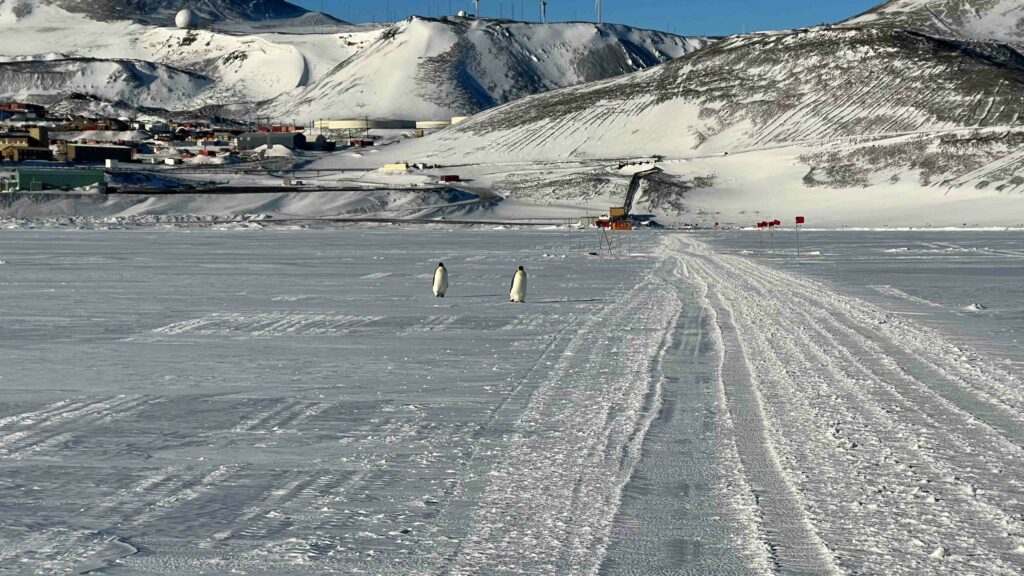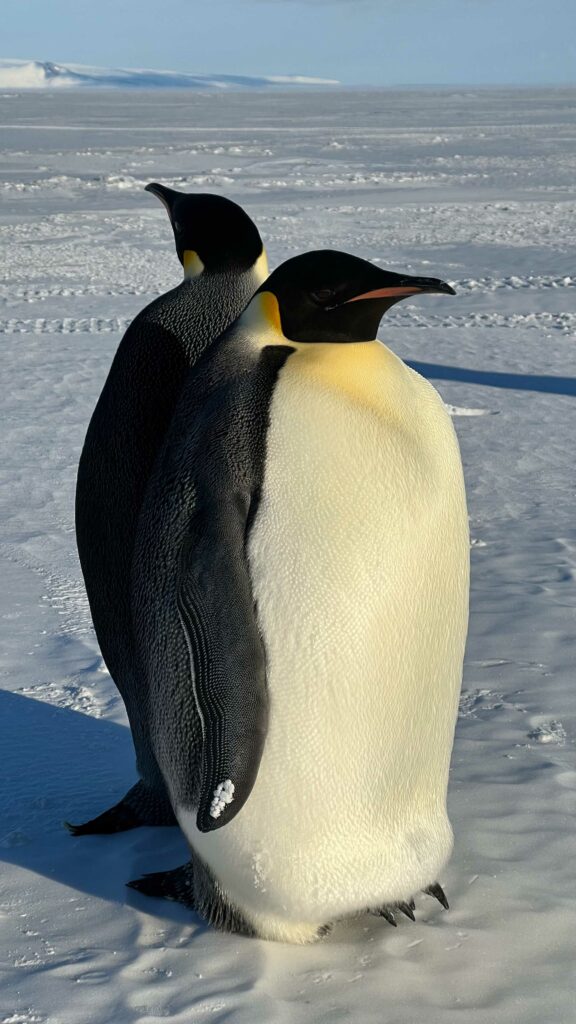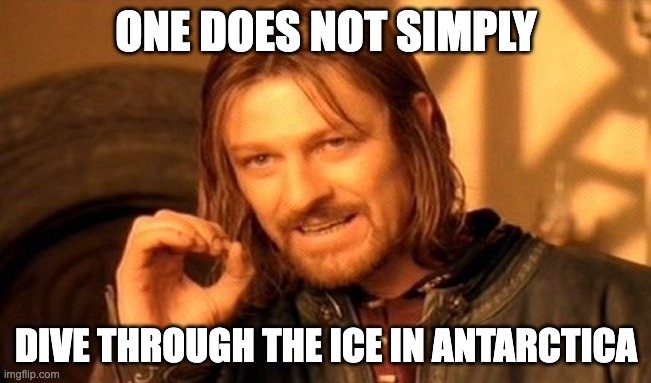
After a nearly 2 hour drive, we finally reached Turtle Rock. What had only ever been a speck of black on the horizon, visible from our Cinder Cones dive site, was now a large mound of volcanic rubble, surrounded by happy, floppy seals. After admiring the beautiful day and trying not to jinx our incredible weather luck, our first order of business was to find a good place for our dive hole.
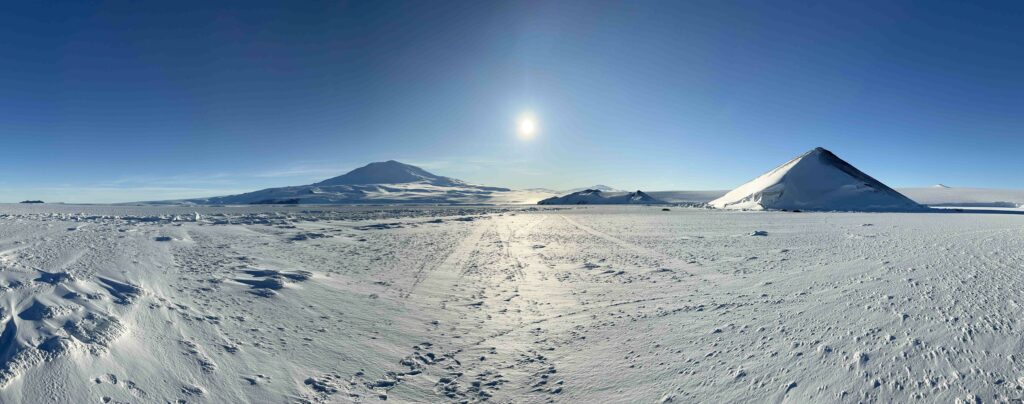
We quickly realized this set-up was going to take a lot longer than any of our previous sites. The ice here was thicker than at Cinder Cones and without the option of heavy machinery (aka a super duper big drill), getting through it was going to be all on us. Using GPS coordinates for past holes and features above ground, we ballparked a potential spot for the dive hole. Before getting to work, we drilled a small hole through almost a meter of ice to drop down a lead line and confirm we were at about the right water depth. The line read about 60 ft, which told us we were close to the base of Turtle Rock’s slope. This would allow us to both collect imagery of pretty creatures in the deeper canyons and also access seepy sites of scientific interest in the shallows.
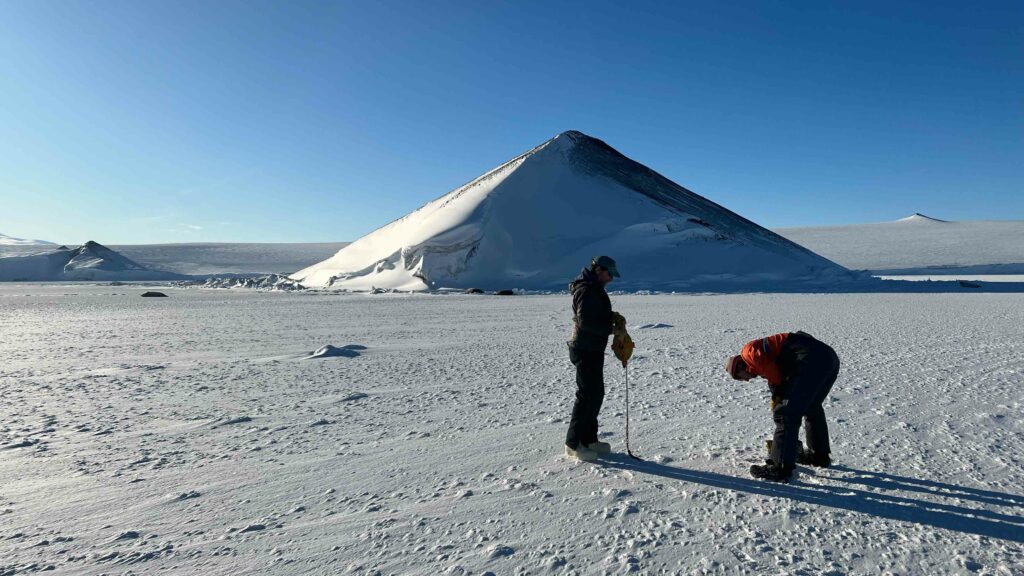
And then came the spicy bit. It may be cold in Antarctica, but nothing warms you up like spending a few hours chainsawing, drilling, and hand-sawing a hole through almost a meter of ice. If someone had told me I would wear nothing but a fleece, thin puffy, and overalls in 2 degree F weather (30 below freezing), I would’ve laughed in their face. I usually tell people I’m chilly in 70 degree F weather. I was sweating.

Cutting a new hole takes a whole lot of tools and a whole lot of motivation – oh and a lot of team problem solving. We started off by outlining a square and went to work with the chainsaw. Usually one would chainsaw small blocks out of the whole top layer of the ice, but this chainsaw was guzzling gas and we knew we wouldn’t be able to count on it for long with our limited supply. Instead we decided to chainsaw a mote – but could only get through about half the ice thickness. So, we drilled holes in the corners of our mote and got to hand sawing. This included the use of a two-person gas-powered Jiffy drill – the jiffiest thing about it is how fast it makes you want to hand it off to the next person.


Personally, I distracted myself from the backbreaking work by looking at our seal friends. Weddell seals are a common sight at Turtle Rock, which is also one of the sites that the seal research teams visit. Off in the distance we even saw a mother with what must have been a newborn.



Okay back to that block of ice – after over an hour of sawing a drilling, we finally had it bobbing in the water. Knowing there was no way we could lift it out ourselves, we set up a v-thread. That is, we drilled two holes in the block in the shape of a “v”, dropped a rope down one end, and used the drill to catch it and pull it out the other. This was then attached to a nylon lift sling, which we hooked up to our Pisten Bully.


Getting this massive block out still took some ingenuity. We first tried sawing a ramp into the ice and dragging the block out with the PistenBully, but it kept getting stuck. With two Pisten Bullies at our disposal, we hatched an improved plan. We would sling our lift strap through one of the Pisten Bully’s roof rack bars and have the other drive away, using the bar as a re-direct to lift the block straight upward. Yes…that actually worked. Ta da! We had a hole.

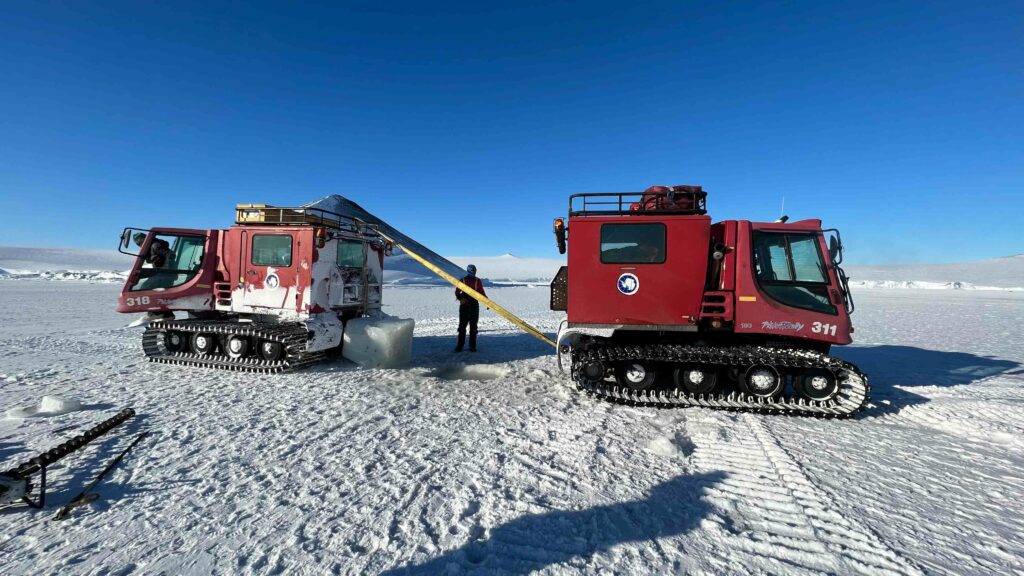
And after some quick dive apple dragging we had a shelter too! Heat would’ve been nice, but unfortunately our propane tank wasn’t feeling up to the challenge of vaporizing at 2 degrees. We could relate, but set our sights on a cold dive anyway. We’d come too far to turn back without going through that tunnel.
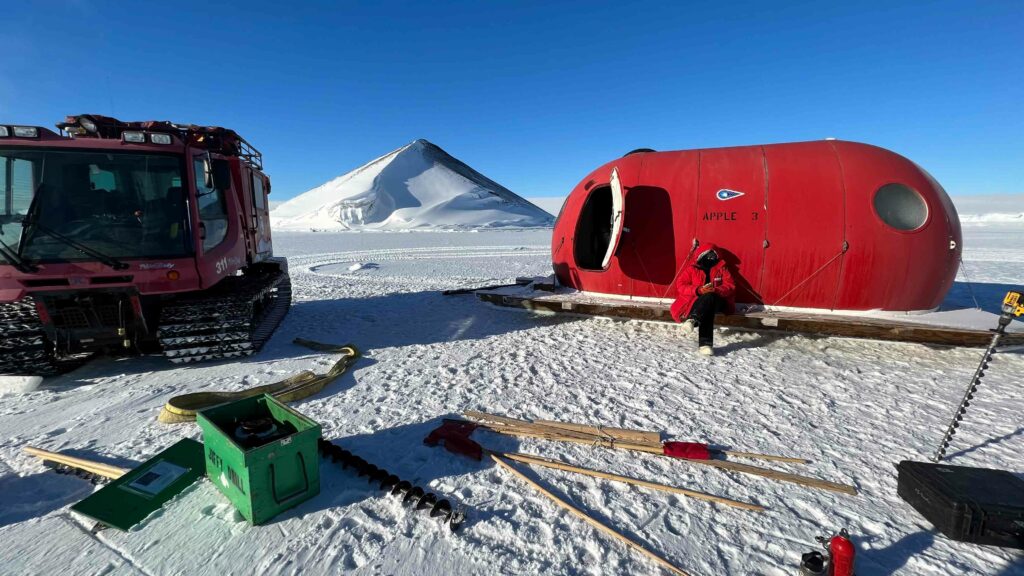

As we were nearing station after a chilly, but productive dive and a long haul home, we received a radio call “Penguins, about a mile ahead of you.” “Are they talking to us…?!?!?!” We didn’t want to get our hopes up, but sure enough, as we closed in on station we began to make out two figures on the horizon, waddling towards us on a mission. We stopped the appropriate distance from them and got out of our vehicles. We weren’t allowed to approach them, but we were allowed to patiently wait and will them towards us with all possible mental manifestation of penguin hugs. No patience was needed, these curious penguins B-lined for us immediately. For a more in depth description of how insanely cool this was – check out Rowan’s earlier post. I’ll just say, this was one of our longest, but most fulfilling days yet. I still can’t believe I’m here.
